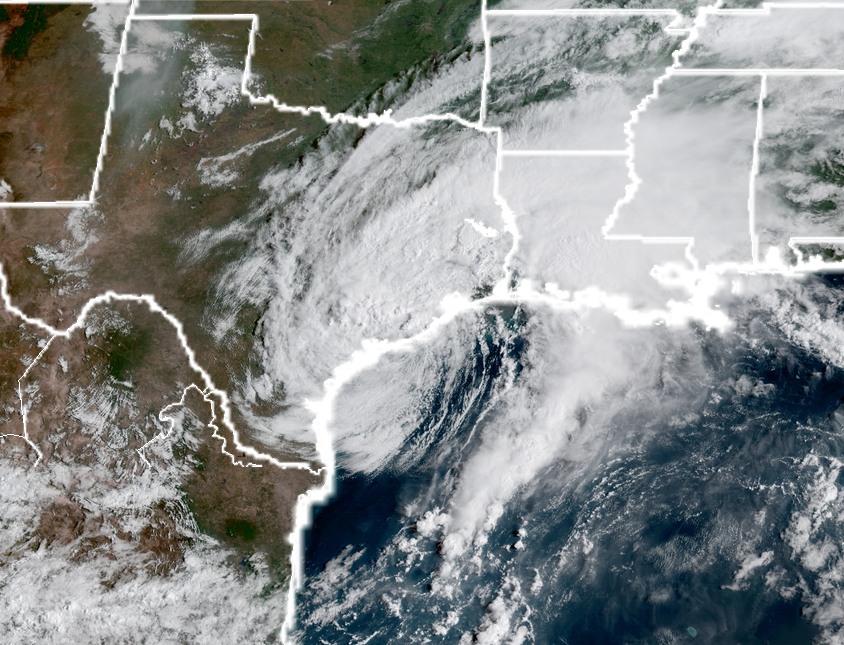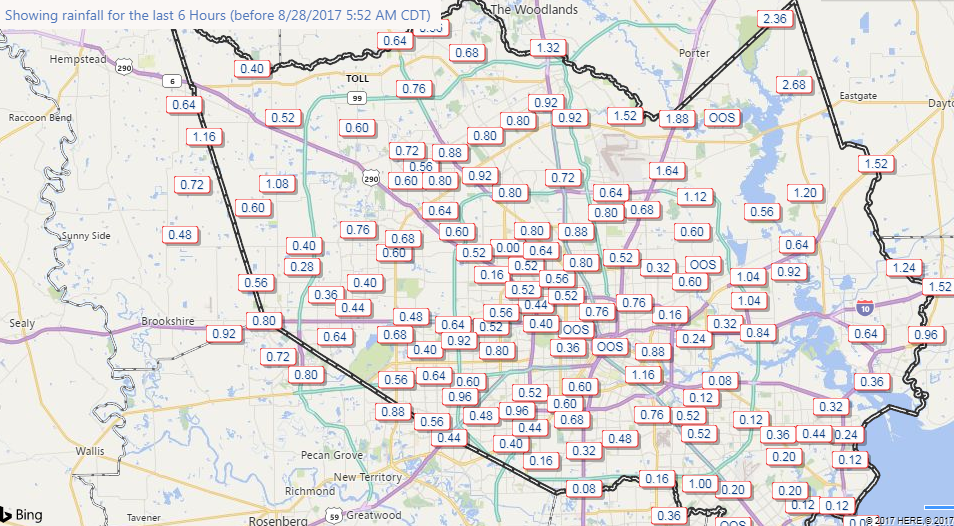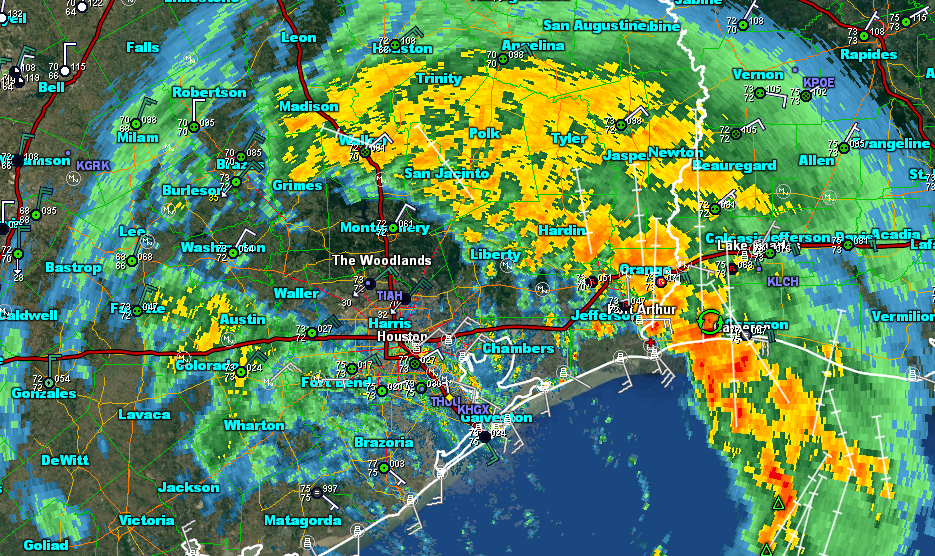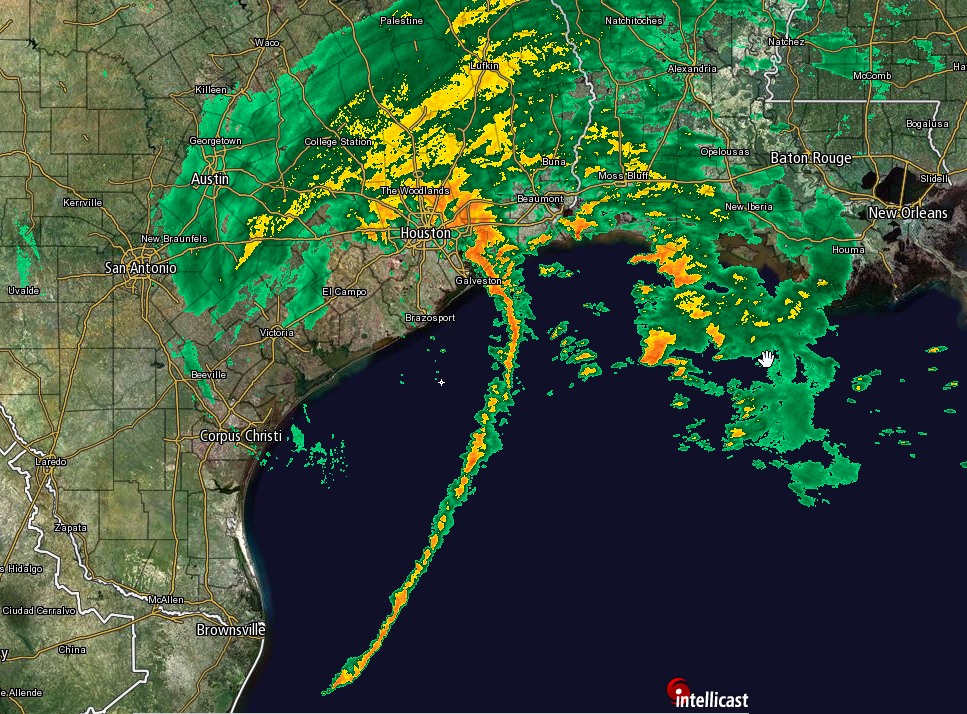Monday, 1pm CT—Houston remains in the midst of Hurricane Harvey’s devastating aftermath, and we are weeks if not months away from a full accounting of its toll on the fourth largest city in the United States. And while a definitive account of its epic proportions will have to wait, we can at least begin to make some preliminary assessments.
In this post we will discuss how Harvey compares to other major flood storms in US history, and also how it stacks up to the region’s previous flooding event of record, Tropical Storm Allison. (Spoiler alert: Allison had a good run, but Harvey has forever dethroned her).
Mississippi discharges
The Texas state climatologist, John Nielsen-Gammon, has been closely tracking Harvey and its attendant flooding. To gauge the overall impact of a rain event, he uses a metric that defines a target zone of 20,000 square miles (about the size of West Virginia, or about 30 times the size of the city of Houston), and then measures the rainfall rate over a 120-hour period in comparison to the discharge rate of the Mississippi River. Here are the top 10 Gulf Coast flood events, as measured in “Mississippi River discharges” over that time:
- 3.6 Hurricane Harvey 2017 (estimate)
- 3.4 Hurricane Beulah, 1967
- 3.1 Brazos River flooding, 1899
- 2.8 Hurricane Georges, 1998
- 2.6 Southeast Texas flooding, 1994
- 2.5 Louisiana floods, June 1940
- 2.4 Tropical Storm Alberto, 1994
- 2.3 November Texas floods, 1940
- 2.3 Louisiana floods, 1953
- 2.3 Tropical Storm Allison, 2001
Note that the initial estimate for Harvey may be too low. As of Monday morning, Neilsen-Gammon’s hand estimate for Harvey to date was 3.1, but more heavy rains were falling in the target area and a full five days not reached. Already, for 72 hours, Nielsen-Gammon said Harvey is the greatest event over this shorter time scale.
Under this metric of rainfall over a large area, then, Harvey will very likely produce the greatest total amount of rainfall in the United States from any single storm, at least during the last 120 years. (the Gulf coast is by far the most susceptible US regions to such events due to its proximity to the warm, humid body of tropical water).




